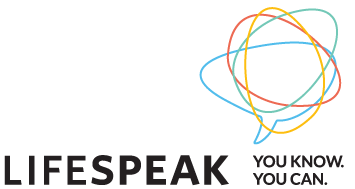Employee Benefits – A primer on Prescription Drug Pooling and EP3
What happens if one of my employees needs an Unusually EXPENSIVE drug?
If you read or watch the news you may well be aware that some drugs cost far more than others. We too frequently hear a lot about high-cost drugs in the media and our clients are asking a lot of questions about providing coverage for these drugs and paying for these expensive claims.
How Much Can Drugs Cost?
Here are just a few examples of some of the high-cost drugs on the market today:
- Humira - $60,000 per year for the successful management of Crohn’s Disease
- Harvoni – $94,000 per year to manage Hepatitis C
- Orkambi – $250,000 per year – has significantly improved the quality of life for those living with cystic fibrosis
And the most expensive drug in Canada at the moment: Soliris at $500,000 per year – used to treat a genetic disorder which affects only a small number of Canadians.
Can benefits plans afford to accept claims for these drugs?
The short answer is, Yes. Your benefits plan will have a “pooling limit”. For discussion purposes, let’s use $10,000 as our pooling limit, as this is a common amount for a small business. If your pooling limit is $10,000, that means that any costs per individual insured under the plan will be capped at $10,000 for future rating purposes. It does not mean that the individual is limited to $10,000 of coverage.
It is important to understand that the employee will be reimbursed for all eligible expenses, but any amount over $10,000 is excluded when calculating the rates which your Insurer will charge at your next renewal. This is designed to prevent instances where a group of employees are massively affected by one employees need to access an unusually expensive drug. Just imagine if a ten employee company had no cap limit and a team member was prescribed Soliris!
By capping the amount via a pooling limit the potential cost increases for subsequent years are kept manageable. There will potentially be an increase, but not one so large that the only choice is to opt out of the benefits plan coverage.
So how do Insurance Companies Protect themselves from such high drug costs?
Insurance companies are of course masters of calculating and distributing risks. Your Extended Health Care rates include an insurance premium which is allocated for the cost of these pooled claims.
With this premium, there is an even deeper level of pooling going on at your Insurer’s level. Have you ever have heard of EP3 Pooling?
EP3 pooling came about in 2013 when an agreement was made between 24 insurance companies in Canada, who all agreed to a joint industry “pool“ for large and recurring drug claims. This agreement was made so that no one insurer must bear the full impact of a claim for one of these catastrophic drugs.
What Happens as more and more effective, but expensive Drugs become available?
Over time, as claims for expensive drugs become more widespread, it is expected that pooling charges which are part of your extended health rates will rise. We are already seeing upward pressure on this pricing. However, such increases will be far more affordable than the cost of bearing the drug’s full cost in the absence of pooling. Everyone insured by these 24 companies will see small increases, but no one Insurance Company, Employer or Employee gets hit by potentially crippling costs.
If you have more questions on EP3 Pooling, Extended Benefits or anything else about your Employee Benefits Plan, please give us a call at 604-568-8860.
These articles are not intended to dispense legal advice and should not be taken as such. You are advised to obtain legal counsel if required to address areas of concern this article may have raised. The goal of these articles has been to draw your attention to an aspect of your business which may currently be neglected.
Categories
- Administrative Services Only (ASO) (1)
- Benefits underwriting (1)
- Disability (2)
- Employee Benefits (2)
- Flex Benefits (1)
- Health & Wellness (1)
- Life Insurance (1)
- Maternity/Parental leave (1)
- Mental Health (5)
- Pension (1)
- Plan administration (2)
- Prescription Drugs (4)
- RRSP (3)
- Taxation (1)
- Travel (4)
- Uncategorized (6)





